Annie Leibovitz Shares Her Vision in Monaco
The newest gallery openings this week, including the dark side of the American dream, traditions of Aboriginal Australian painting, a cheeky photographer, and more.
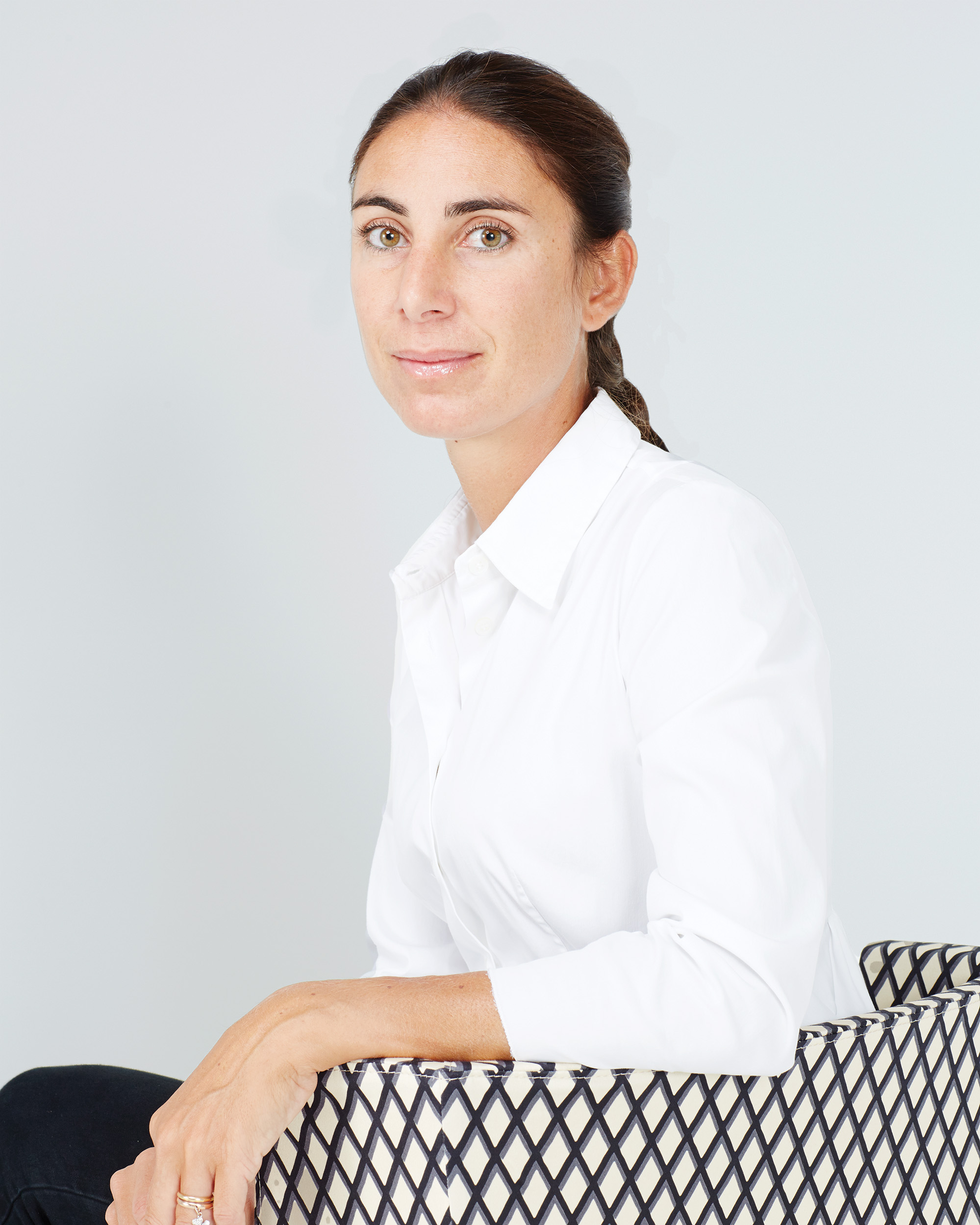
Milan Design Week is the most exciting time of year in design. On this special episode sponsored by Kartell, Dan reports from the Salone del Mobile fair to catch up with a quintet of industry powerhouses: Lorenza Luti, Philippe Starck, Piero Lissoni, Patricia Urquiola, and Roberto Palomba. Up for discussion is everything from the first designs made using artificial intelligence, the impact of sustainable materials on design, and the perfect place in the dynamic metropolis to find some peace and quiet.
TRANSCRIPT
Roberto Palomba: I think design is a mirror. So fashion looks in the future as much as design is the now. So there’s nothing like design to express the culture of now even when there is crisis or where is a boom and so on. So I think it’s changing with the evolution of society.
Dan Rubinstein: Hi. I’m Dan Rubinstein and this is The Grand Tourist. I’ve been a design journalist for nearly 20 years and this is my personalized guided tour for the worlds of fashion, art, architecture, food, and travel, all the elements of a well-lived life. And welcome to a little special bonus episode, A Postcard from Milan, sponsored by the incredible Italian design brand, Kartell. We’ll be back for season 10 on May 8th, but before then, I thought I would check in with my listeners from the heart of Milan Design Week at the Salone del Mobile, the biggest and most important design fair in the world. Every April, designers and aficionados from around the world converge in this dynamic city to show off their latest products, curate the most thoughtful installations, and of course, sip a few Negronis in this most charming and elegant of cities.
I’ve been coming for years, and when it comes to the furniture fair itself, Kartell is always my first and favorite stop. It’s a legendary company that helped found the Salone itself, and many of you may know it for their pivotal innovations in plastic. But for the past decade, the brand has pushed its comfort zone into dozens of new products from sunglasses to sofas with an eye towards sustainability. It’s also a perfect booth to see the best work from all the heavy hitters in the industry, many of whom I’ll speak with today. And if you’re a longtime listener of the podcast, you’ll be familiar with some of them, including Philippe Starck, Patricia Urquiola, Piero Lissoni, and Roberto Palomba.
The brand is the perfect microcosm of Italian design. But before we dive in with some of these massive talents, I say a quick buongiorno to Lorenza Luti, one of the ringleaders of this incredible brand whose family has been at the forefront as owners of Kartell since the beginning. Luckily for me, Lorenza organized a fantastic podcasting studio in the middle of their bustling booth. I wanted her to explain the inspiration behind their presentation this year, how the company has managed to evolve into a sustainable design powerhouse, where she likes to go to find a quiet moment in Milan after all of the insanity and more.
(MUSICAL BREAK)
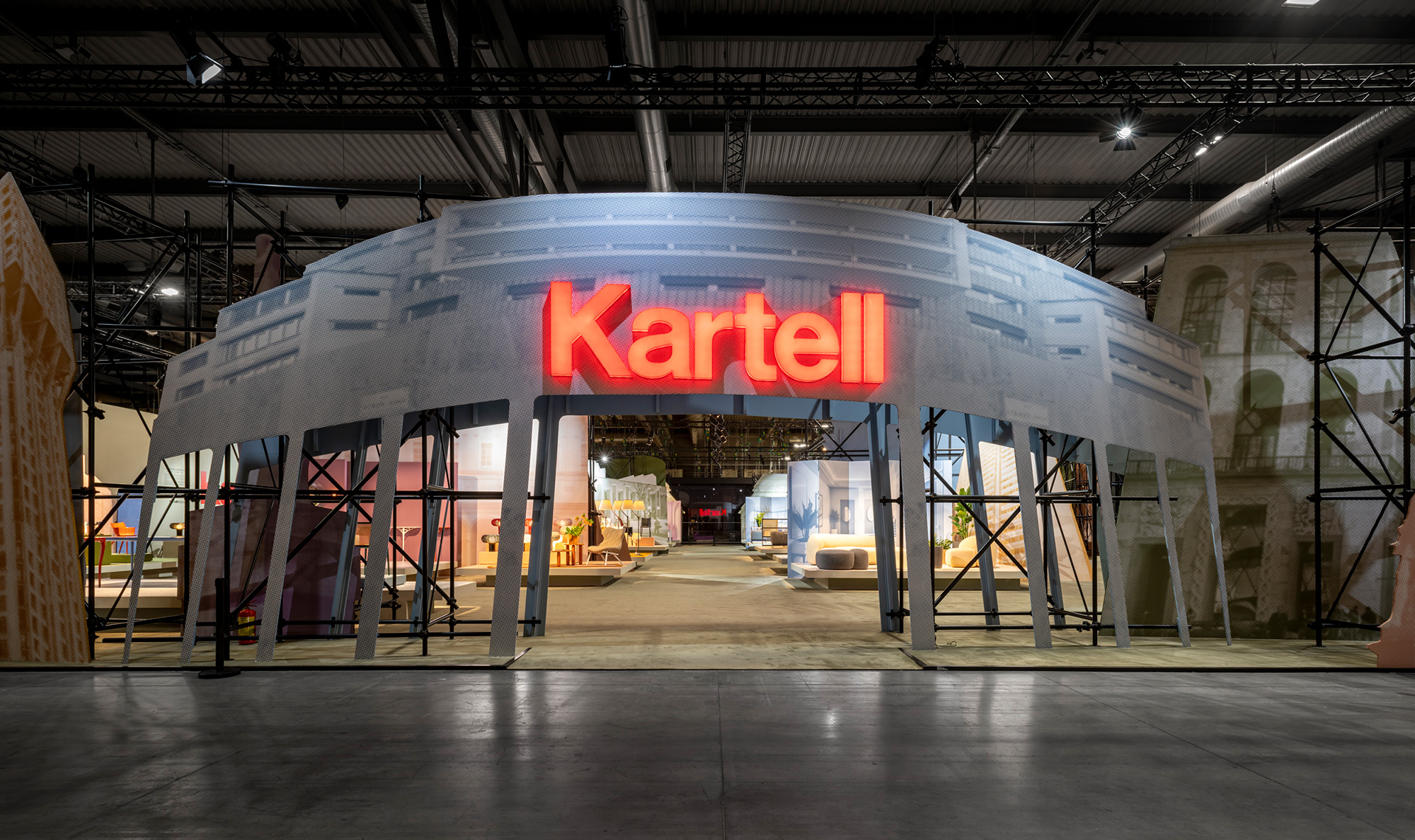
Ciao, Lorenza. How are you?
Lorenza Luti: Fine thank you, Dan. It’s fantastic to be here with you.
Thank you. It’s such an amazing treat to have a whole booth behind glass and an amazing crew here. It’s really a treat since I normally record the podcast at home without any crew other than myself. So this is a real treat. Thank you so much. Tell me. Salone del Mobile is such a miracle, that it all comes together in design. How many years has Kartell been doing the fair?
Kartell is doing the fair from the very beginning. My grandfather was in the committee that started the fair. I remember, as a child, that we were in the Milano City fair at the beginning with small booths. Now, after more than 60 years, we enlarged, and this year is the maximum.
This is the biggest the booth has ever been?
Yeah, it’s about 21,000 square feet.
Gosh.
So it’s real, real big.
Oh, wow.
Every year is getting bigger because we have a bigger collection.
And this theme, Urban Horizons, tell me about this theme and what you guys are trying to communicate with the theme and the booth?
Urban Horizons is a little bit the story of Milan. Milano is our city of the family, of Kartell, but also where we think about the collection, we think about the product, and from scratch, it becomes a real element. For us, it’s also where the creativity, the intelligence, design is born. All the designers come to Milano to do their products from all over the world because it’s not just Kartell, but all the design companies are here. And so we are very proud to promote and to be associated to the city.
And with everybody here, why is that the right message for Kartell, for this company?
What do we want to communicate? We want to communicate to everybody that Kartell is not just an object. It is not just the fantastic Componibili that my grandmother designed, but it’s a creative hub. It is a design company and has her own lifestyle. And this is what we would like to show to our lovers, to our clients, to the press. Show that Kartell is bigger and that we have worked a lot in the last 15, 20 years to go deep in all of the directions and enlarge every kind of divisions, from the lighting divisions that give us a lot of success, upholstery, of course, the chairs, which are the heart of Kartell, but also small object, gifts and so on. So we want to promote that we are a brand and we can bring our lifestyle in the world, not just mono brands, because we like when our products are mixed with other styles or transversal and everybody picks what they like from their collection. We love this. So it can be put together but can also be mixed with any kind of style.
And today I’m speaking with a lot of the fantastic designers that are part of this Kartell family, but there are so many projects here that you guys have going on, including something with Barbie and something with Liberty and these amazing collaborations. Tell me a little bit about the Barbie collaboration.
This is a little bit my fault. We like sometimes to go out the furniture and design world and to pop in with art, with fashion, with food. Barbie, it’s a long-lasting collaboration with the American team. We partnered already 15 years ago and this year is the 65th anniversary of Barbie. We planned already a few years ago to do something together and what could we do? We had to take our iconic chairs and make them small. And so we did this fantastic pack of five iconic Kartell chairs that are available for the collectors. And from our side, at the end, we decided to also have two real icons like Louis Ghost and Masters in a bigger size in the Barbie spirit and color.
And the Liberty collection is also really interesting. Can you tell me a little bit about that?
Liberty is a fantastic company which has an amazing archive, 150 years of history, and by chance, always with relations because this is how everything happens.
It’s an iconic British store and brand for fabrics and pattern and stuff like that.
And we were trying a lot to use patterns on our products with a special technique. And it’s a lot of years that we are trying to do so. But we finally found this technology and so we thought with them to pick and work on some of their important patterns and put them finally on the chairs. So we started using patterns on plastic material, but then we really loved so much this collaboration that we also worked on another outdoor collection with fabric. And so the collection really expanded. And this year during Salone, we are having a special exhibition in Milano in our store with all the windows dedicated to the Liberty and Kartell products.
And today, when someone comes here and they see this theme and they see this amazing booth, and when they leave the booth, what do you want them to take with them? What should their takeaway be when they leave, seeing everything?
Understand what Kartell is today and take with them the evolution of the company. This is what we try to do with our exhibition today and give a little bit of, let’s say, emotion that they can remember us. So with our exhibition, leave something inside them.
With Milan being the the theme, this Urban Horizons theme for Kartell this year, when this is all said and done and the crazy week of Salone is over, where in Milan do you like to go to relax, to be alone with your thoughts, to hit the reset button, if it were, with your mind?
I love my city. I love Milano and I feel that it’s international, but also very small and you can walk around it. Actually, now I use the bike. On weekends, I like to go to the gardens in front of Universitas Statale, which is a beautiful place and very, very quiet. During weekends, you don’t have many people because you don’t have university going on, and the place is really nice. And it’s not so well known, but I really suggest it.
And if you had to describe Kartell and the Kartell spirit today in three words, what would you say?
Kartell, for me, is creativity, innovation, and also a lot of sustainability.
(MUSICAL BREAK)
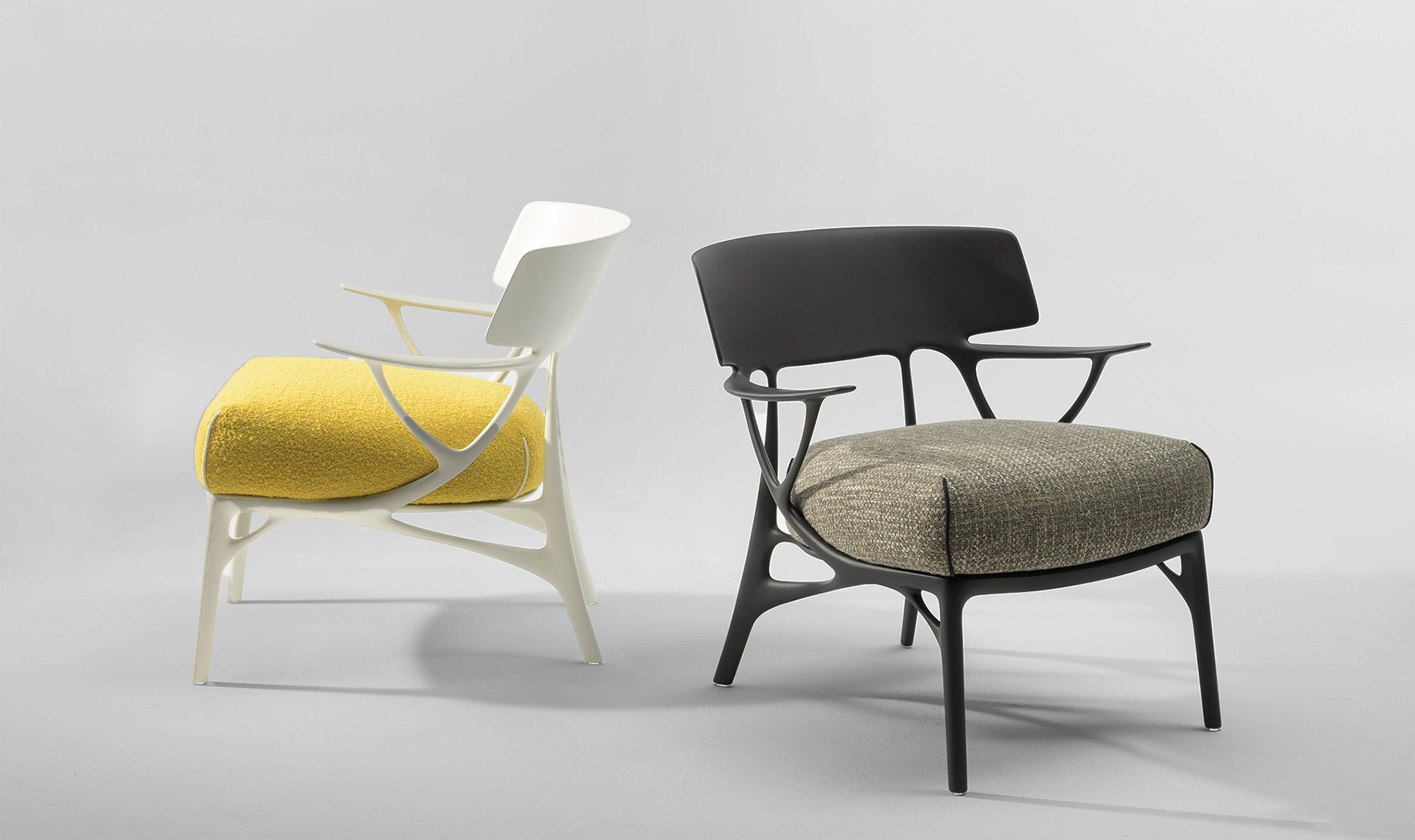
Earlier in the day, I met up with the one and only Philippe Starck at his hotel for breakfast to chat about his latest project for Kartell, a series of chairs and tables created using artificial intelligence. It’s probably the first of its kind and leave it up to this legendary troublemaker from Paris, whose best-selling Ghost chair for Kartell is the textbook example of iconic, to make it all seem as chic as inhumanly possible. Thank you, Mr. Starck, for taking some time out of your busy morning here for the Salone. How are you doing? How are you faring midway through?
Philippe Starck: It’s not a busy morning. It’s a horribly busy life, but it’s better than dead. How I feel? Dying slowly but surely, especially after this 50, 60 hours, which was very, very satisfying for design, for ego, but nothing else.
And of course, your major project is with artificial intelligence. So why AI? How did you decide to embark on this project?
And I am very proud of that. But I realized last week that I was the first one to produce industrial product with AI. And I started five or seven years ago when nobody was speaking about that. When I go to see Autodesk, which are very charming people who are at this time the only people with artificial intelligence, and when I tell them, “I’m sorry, can I use your brain?” And they said very nicely, they said, “Yes.” And when I go to see the machine, the image, and I ask her, “Can you help me to rest my body with less energy and the materiality that’s solar?”
Now you have the answer in one second. At this time, we have the answer in more than two years, almost three years. The machine worked during all this time because she was completely lost. And it was very touching, because we have a movie of what’s happening in its brain. And we see this machine will try to find a solution, and you realize it’s astonishing. It made a mistake. It goes back, it comes back on the subject, it makes another mistake. At two times, three times, I said, “Today we stop. We stop. We shall never succeed.” And the people at Autodesk said, “No, no. No, no, no, no. We continue. We continue. We’re not giving up.” And at the end, the machine finds it.
That’s why with the first AI, we know what is really the minimum of everything. We know that it’s a structure which is almost vegetal. And it’s a big success today. I think it’s number one in the world. And we love it. We love it. We all love it because we know there is something real, something honest. It’s not trendy. It’s not snobbish. It’s not a fantasy. It’s real intelligence to help us to have a better life. That’s why we continue. We continue the family. We make the stools, the table and things like that.
And some weeks ago, it was a little late, I realized that the people who have not a lot of money have small space. And now, because the real estate exploded everywhere, people who have money have not a lot of space also because the price by square meter become completely crazy. And I come back on my old obsession which was always occupy the smallest footprint in everything. And the smallest is foldable, stackable… but it’s not the smallest. And the smallest is folding up. That’s why I create with inspiration from AI. Because I learned something through AI, and now we learn from AI.
And there’s a lot of anxiety about AI and a lot of people worrying about it in design and creativity, and what the impact will be to creativity. Do you worry about AI in that way?
The problem is we are childish geniuses. We are fascinated by all the toys we create today. And if you see the result there is, sadly always, in everything we create a bad part and a good part.
Look at the atom. Atom is by fusion, not by fission, the energy forever clean and things like that. But we had the choice between fusion and fission and we take fission, because with fission it was possible to make a bomb. That’s why at the one end, we create the infinite energy, and the other end we kill people. It’s a real image of all our predictions. I almost don’t know… I have tried all my life to make it good, good, good… without any bad part. It’s really difficult. The good thing is, if we are speaking now, alive, that means we have made more good than bad. That’s good.
But for AI, it’s exactly the same thing. AI is not the enemy, it’s not a friend. It’s just what we want it will be. That means the enemy is us. The enemy is what we shall do with… We shall see. We shall see because, with us, we never see. But the potential is incredible.
Do you worry with AI that it would be difficult for designers to work? I mean, essentially to become a profession that is obsolete?
I have immediately made a small department to search what we can do with… The result is clear. The power of the machine is astonishing. The quality of the result is astonishing. I am shocked. Shocked. In my favorite game is to write, “Make me a Starck chair.” In one second it made me 75 incredible Starck chairs but… it is not a Starck. Because this machine is incredibly intelligent, has an infinite intelligence, but she’s not cuckoo. She’s not crazy. And creativity is still something abnormal. It’s… I don’t know what. And this “I don’t know what,” it still not have… That means today it’s a fantastic tool to work with, but don’t expect to create something interesting today. Tomorrow morning, at the same time, I don’t know. Because that goes so fast.
(MUSICAL BREAK)
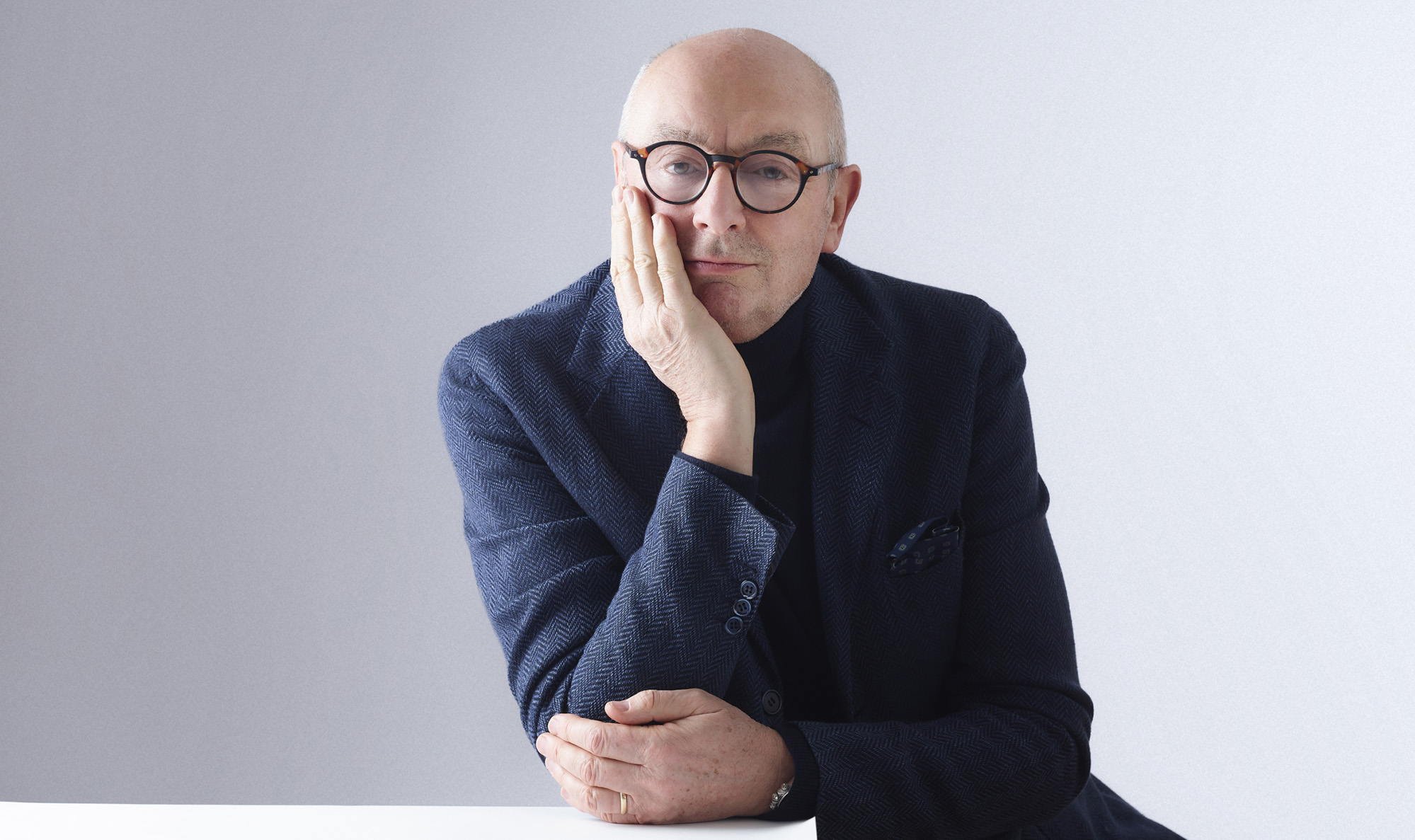
Like Starck, my next guest has worked with Kartell for decades and is super close to the Luti family that runs Kartell. Piero Lissoni. If you haven’t listened to his episode for The Grand Tourist, know this. Lissoni is something of the elder statesman for Italian design and so many roads lead back to him. Quiet, elegant, and always sharply witty, he applies his no-nonsense style to everything from hotels and offices, to chairs and sofas and so much more. His petite new sofa line for Kartell, called Asia, is destined to become the little black dress of the living room.
Good afternoon, Mr. Lissoni. How are you?
Piero Lissoni: Quite well. Quite well.
Good, good. Nice to see you. How are you faring this salone? How many salones have you been to at this point in your-
I don’t know. 30?
30.
35?
35. Okay.
More or less.
What do you love most about it?
I like the stress. I like the pressure. I like every year I feel everything is completely wrong. It’s a beautiful sensation. And after that I feel, I like this kind of sensation, to be free. For me now, today, I feel okay. I’m having a holiday.
Are you critical of your own work? When you come and you see it all completed, are you critical of what you see usually?
Absolutely, yes. And all the time I’m looking through the different parts of my project and my work, and I think in my mind, “Oh my God, they are totally, completely wrong. For the next, you do something better.”
And tell me a little bit about your contributions with Kartell this year.
Well, listen, we start to design some piece of the new families of objects because now, Kartell, it’s in the end a special creator with a strong catalog and a strong capacity to offer a new idea of houses and homes. Well, in my mind when I discussed with Claudio, we decided, “Okay, now we need to improve a little bit some parts, like a new sofa, and new armchairs, some new coffee table. But we need now to jump and to be more precise, in another world.”
And we start to design this new architecture, a small piece of architecture, inside of the house. A small piece of architecture like a new house, a new home, for books, objects, qualities of our thoughts in life. I like the idea to think, and with thoughts together, to design something like this, a small architecture.
And the Asia is a set of sofas and armchairs with a unique design that makes it very Kartell, but in an unexpected way. How did the seating system come about?
Because we start with the simple pieces because the idea, it was okay, we don’t need to design again a giant series of components. But the idea, it was okay. We designed now a very simple family, well-dressed up to Kartell.
And after that it’s like when you eat something you become a little bit more hungry. And today we discuss again, “Okay, they’re beautiful, but we need to increase into giants the family.” The company is not enough, it’s a new family. And we start to discuss and bargaining around of new pieces to add to Asia.
Because you design so many things at such grand scale, is it actually more difficult to design something like a very humble, and not to say simple, but something, kind of a basic sofa? Is that more challenging?
When you start to design a small object, I think you need to put inside the same level of complication like a big… I don’t know. When I design, for example, one building, it’s a complicated creator, but when you reduce the whole scale to be humble, to be gentle, I believe it’s one of the most complicated project in the world.
Think about one chair. One chair is like a super concentrated part of the whole architecture in the world. Four legs, three legs, one backrest, one simple surface when you are sitting on, and this become one of the most complicated architecture.
And with this sofa system, what was the complication with it?
No, you need to design something easily, but not really easily structure inside. You need to any way use proportions, in the same time you need to add a little bit of beauty, because it’s not enough to put inside a function. And you need to be Kartell, shake and try.
How do you describe that Kartell sort of ethos, the idea of Kartell? What does Kartell mean to you?
For me Kartell, it’s… Okay, can you imagine one border? You arrive nearby the border, and the border is moving and you discover a new border. And when your thought’s in your mind, “Okay, now I know more or less what happened.” Kartell change again the border, and again, and again, and again. This is Kartell.
(MUSICAL BREAK)
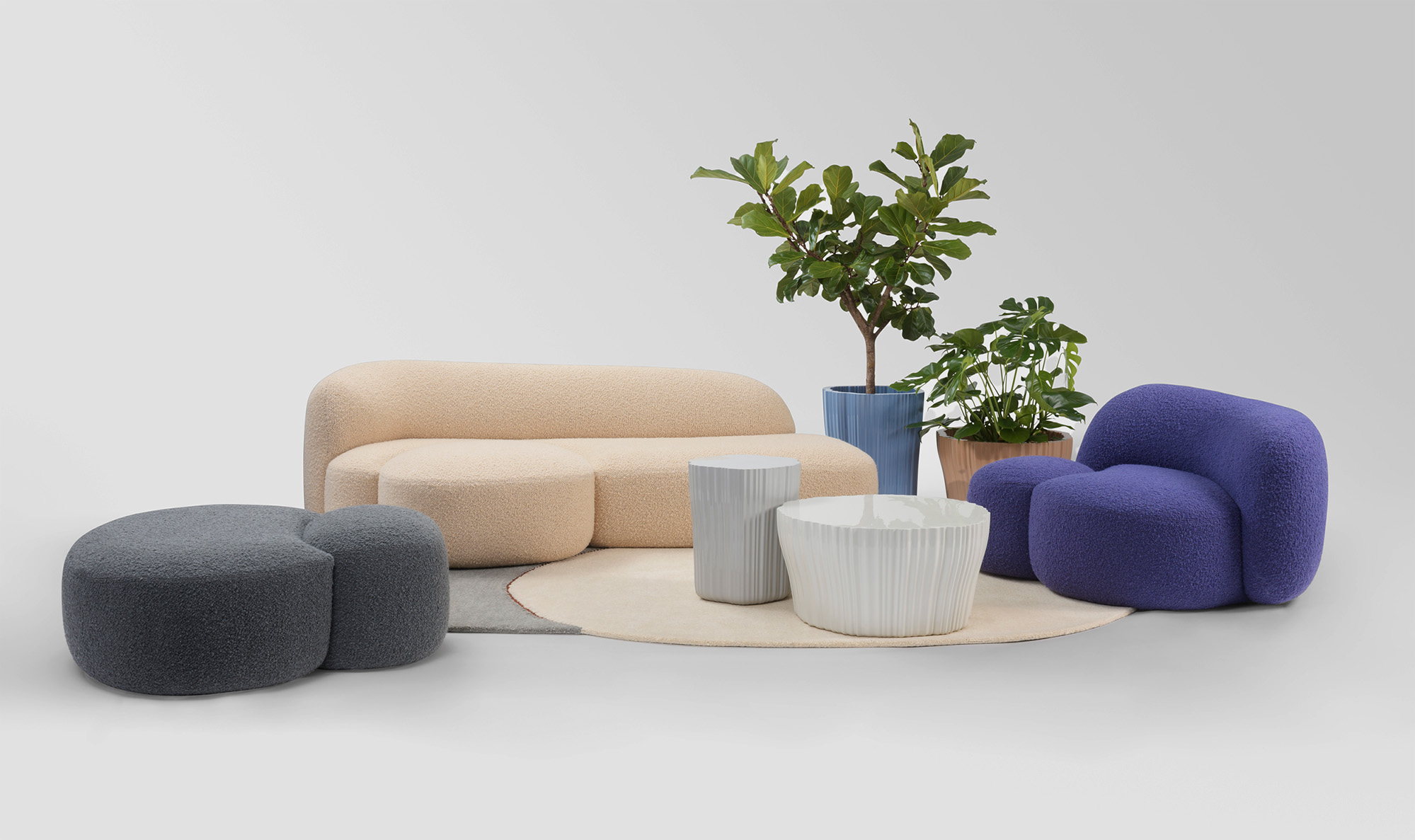
My next guest is a Spanish designer who’s been based in Milan for decades. With her sense of style, color and Mediterranean charm, she’s become a total product design MVP. Patricia Urquiola. This week I’ve seen her signature all over Milan in so many innovative products, and her work for Kartell is no exception. This year she created a sensuous and organic seating system with corresponding rugs and planters for Kartell, called Aaland.
How do you mentally and physically prepare yourself for Salone every year? Do you do a routine? Do you do yoga? What do you do?
Patricia Urquiola: What I do? I think I have a… I work with people I like, that I think is the first routine. My routine is to enjoy my work, that is very important. I live and work in the same place in the city. I’m a lucky girl, Milano has been a place that adopted me many years ago, and for many reasons I can get always in very nice relation with people, that they are long. Perhaps things that came this year of my work that we’ve been working for two years, or something we are doing that I’m not showing now is for me very important, and it’s here is really a complex relation and I’m lucky on that circumstance.
And this new collection with Kartell that you’re doing is all about the Milanese home, right? And how do you define the Milan living room to someone, maybe from Los Angeles, how do you define what that is?
Well, it’s coming from Los Angeles, I would say that the Milanese room that Kartell intend to do in the project we are doing together is smaller, it’s because the way we live here is we have other relations with dimension that possibly LA… And this project was just we are translating, it’s the second collection we are doing, trying to give a kind of new values to those very simple seats, a little ottoman… The project began from a little ottoman, and the ottoman became a armchair, and this all [inaudible 00:26:38], “We do a kind of sofa. No, no, we don’t do a sofa, it’s a kind of allonge. No, it’s a longer armchair.”
Then trying to do little volumes, that the name Aland has to do island, which is archipelagos in Finland. Which it gets into the water in a very easy way, and there’s so little round elements that they are into the water with only trees, but very, very round, because out of wind… Then it’s very interesting. I was remembering this part of Finlandia in this work.
Then the idea is sometimes you need a kind of project that is a domestic landscape, that Kartell is trying to enlarge, which is not relative to all the core of his work, which is of the work which is more the plastic, and it’s more about enlarging the possibilities. But always in those tiny dimensions. And into the island we always find the cortex or trees or things, and then we did a table which is a research in rotational injection, those kind of rotational plastic research, with recycled material. Then the tables are very natural, they’re coming from nature, but it’s nature and art [inaudible 00:28:12] they live together now.
And what makes you think that this collection could only be done by Kartell? What makes it a Kartell project?
I think Kartell is trying to enlarge the approach to domesticity through those solutions, which are for simple apartments, for the way they approach even the balance, in between the price of the piece and the way it’s produced. Then we are really trying to get into very simple solutions of life for people.
I always like this conversation with Kartell. And then really I think they’re very affordable, and I like a lot this side of speaking in a very enlarged conversation with a lot of people, always working on quality. I think the armchair is the piece that represent the project.
Obviously you work with a lot of different brands, and obviously Kartell works a lot with recycled materials now, and new ways of using plastic and bioplastic. Does that make your job harder as a designer? Is it more difficult to design things with these new materials, or not?
Harder? Harder can be a very positive word. Difficult is not the argument. I think now the way… I think we are so lucky from that side. I think the designers, finally we have a space to discuss with companies to find new circular ways to approach material. Then the conversation is getting larger and larger, and I think everybody are rethinking if they want to have a certain quality in the company, how to do with everything.
So with Glas Italia, I’m working with the leftovers of the glass they’re doing with all the other designers. Then I said this year we just use that, and we do a kind of agglomerate, as something which is very interesting just with leftovers, or I can go with some other nice examples that I enjoyed a lot this year. Then at the same time I think it’s a moment where the difficulty… Difficulty is never a word, I think, it’s necessary and the difficulty is to find the new beauty in those regenerated materials. How to make them really valuable and interesting. And that is the difficulty always, but that is our work, and I love to work in that kind of research.
(MUSICAL BREAK)
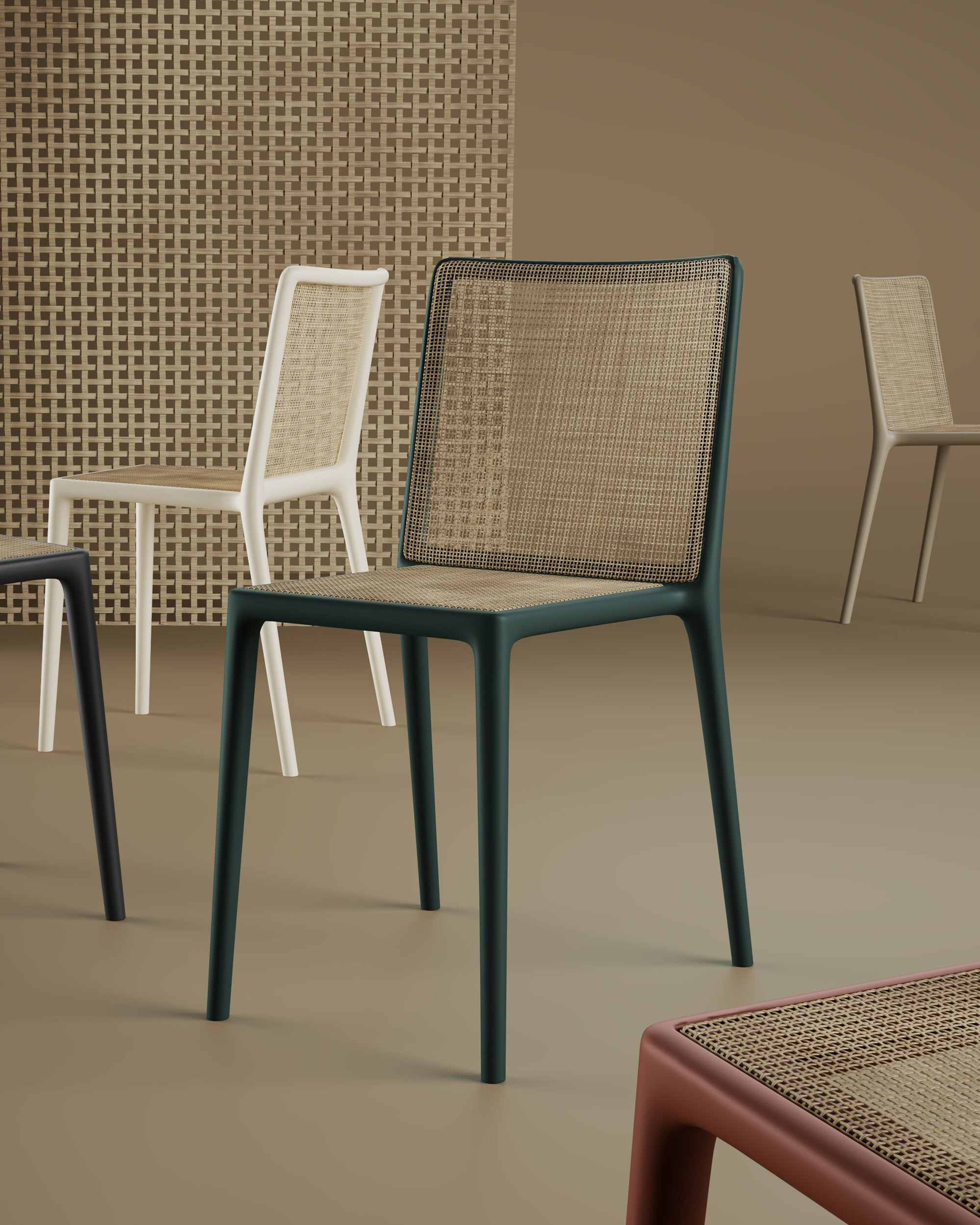
Last but not least, I chat with the always soulful and poetic Roberto Palomba one half of the Milan-based husband and wife firm, Palomba Serafini Associati, which just celebrated its 30th anniversary. His firm creates a wide variety of luxurious products, private homes, and hospitality projects. This year with Kartell, he has three new products, including a dining table and chair that exude a kind of classical elegance you might not expect from this cutting edge brand.
How has the fair changed for you, compared to what it was 30 years ago?
A lot and nothing. Because more or less, it’s always the same concept, let’s say. I don’t [inaudible 00:31:43] talk about people producing furniture, taking the furn… Showing the furniture prototypes, or more or less, and designers. And so, it is always the same. What has changed is I think design is a mirror, or the [inaudible 00:31:58]… So, fashion looks in the future as much as design is looking now, is now.
So, I think that when I started, the design was very radical and there was any period that I would think… It was even a little bit more disconnected by society. It was not reflecting very well. So, after this period, it started in a re-revolution, and it’s more connected with the people, more international, a little bit more globalized. And I think it’s expressed the… There’s nothing like design to express the culture of now, even when there is crisis or where is a boom, and so on. So I think it’s changing with the evolution of society.
And with everything that you’re working on this year and what you’ve seen so far, how would you describe design in this moment?
I can say a lot of colors. That is a very similar… Let’s start from the skin. It’s on the surface. The surface seems to be needs color. I think in the dark moment as we are today with the wars everywhere, people is suffering. We are here partying and we think, but our heart can’t be close to the people is suffering today somewhere. So yeah, even a little bit, I feel a little bit even guilty for my joy.
So, what we have to do is to try to be positive. I know it’s not easy, but I saw a lot of color everywhere. And colors on the surface perhaps means they are like a flag of the message of keep going, and try to do the best. On the other side, I see a lot of quality all over. I see the general level has grown up a lot. And there are some brands, of course, that they are over the top. And the other one that are reaching, there are some interesting new talents growing a new generation, I see that… I can say something that is not very nice to say, but I see that this is a job for adults. The new generation they have to reach a certain kind of quality that is necessary to be successful in this field.
It takes a little bit of time to be mature. So, I think we have not only to do our job, but to prepare the credo for the next generation. On the other side, I think the next generation is a little bit, let’s say, to see us as an enemy to destroy, not just something to imitate.
And this year with Kartell, you have three new product families. Well, there’s the Albert table, and there’s the Belvedere chair, and the third one?
And the third one is a new sofa from the Hiray collection.
Okay. And the Belvedere, such a perfect name for this chair because it’s so classical in a sense.
You know what Belvedere is?
No, you tell me.
Belvedere is the name of the museum in Vienna, where you have the best artworks of the Vienna Secessione period.
Okay, all right.
So, because we were using the rattan, the webbing, that is typical with… This call in Italian, it’s called Paglia di Vienna, it’s the rattan from Vienne.
Sure.
So, this is the reason why we call it Belvedere.
Oh, all right. I did not connect it to Vienna at all. And it has this cane seat with the carbon fiber frame. It’s this nice mix of the past and the present. How did that choice come together?
I think that the contamination is very interesting in Kartell. So now they open this, you see with the wood, with the metal, so they are opening the contamination with some multi-[inaudible 00:36:08] product. And this was the perfect combination between a very technological, synthetic material with the carbon fiber, so we are using a synthetic material, is involved with the carbon fiber. And we want to have some natural material with a natural touch, and not perfect. Emotional, transparent, I’m saying not solid, as not something that create a shadow. Very emotional that they can bring together. So, we were studying a way to connect these two materials. We found a connection, and it looks like a very natural, and so on, but there is a lot of technology behind.
And. no, I totally understand. And both designs have this kind of very elegant, nostalgic, as you pointed out, feel to it.
I’m growing old.
Do you find yourself becoming more nostalgic, or more drawn to classical design as you get older?
I’m not growing old? Oh my God, yeah. My mirror say that, and also my back, but this is another story. I think I’m more respectful. That’s what I was saying before about young generation, they have to hate us, they have to make a revolution, they have to look at us and say, “Okay, we have to change the world.” Then with getting experience, like children, when they fight against their parents, and then they became perhaps worse than their parents, at a certain moment. And it’s little bit like that. I was accepting, and the story, the history, their heritage, their roots, and I was not looking these roots anymore like an enemy. And I was looking like an ally, like an opportunity, like something that also belongs to my history. So, why not to use it?
And now 10 years later, in all the collaborations that you have with Kartell, what does the brand mean to you? What does the word Kartell mean to you, when you hear it?
I can’t [foreign language 00:38:23]. I don’t know to say, to separate.
To separate.
The name Kartell with the family. It’s an incredible value. I can say that I really love these people, for the passion, for the generosity, for the effort they do every day to make this job, to be a guide light in this job. I don’t want to say that for please, because I don’t need, but these people is doing an incredible job for everybody.
And they are… When you design for Kartell, of course they select a product. I like to draw a lot, I make a lot of sketches, when I work with them I take a lot of stuff. Of course they select. But the moment you select the job, it’s a wonderful moment, because you share the selection. It’s not somebody that say, “Okay, I like it. I don’t like it.” No, it’s not like, “I like it, I don’t like it.” It’s not, “I’m imposing you my selection.”
No. Sometimes we share it together, we select together. So, it’s the designer feels super, even if you are not the entrepreneur, your have your role, your role is clear, and so on. But you feel part of the process. You don’t feel used, squeezed, or milked.
I’m not a lemon, I’m not a cow. Even if I’m perhaps a pig, if I grow fat like that I can be ham.
Thank you once again to our sponsor Kartell, as well as to all of our guests, Lorenza, Roberto, Patricia, Piero and Philippe, as well as to Cristiano for making this episode happen. The editor of The Grand Tourist is Stan Hall. To keep this going, don’t forget to visit our website and sign up for our newsletter, the Grand Tourist Curator at thegrandtourist.net, and follow me on Instagram @danrubinstein. And don’t forget to follow The Grand Tourist on Apple Podcasts, Spotify, or wherever you like to listen, and leave us a rating or comment. Every little bit helps. Ciao, ciao!
END OF TRANSCRIPT
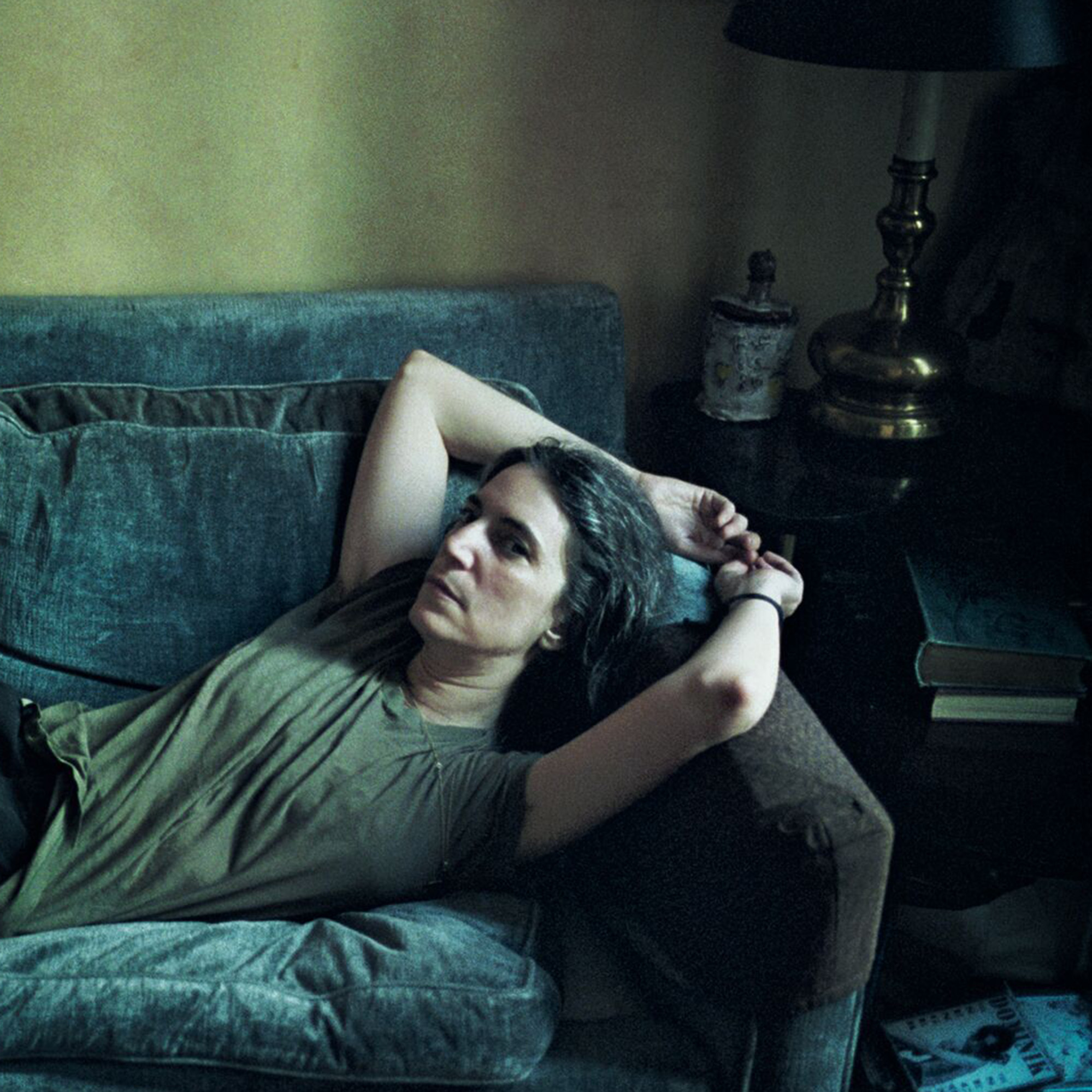
The newest gallery openings this week, including the dark side of the American dream, traditions of Aboriginal Australian painting, a cheeky photographer, and more.
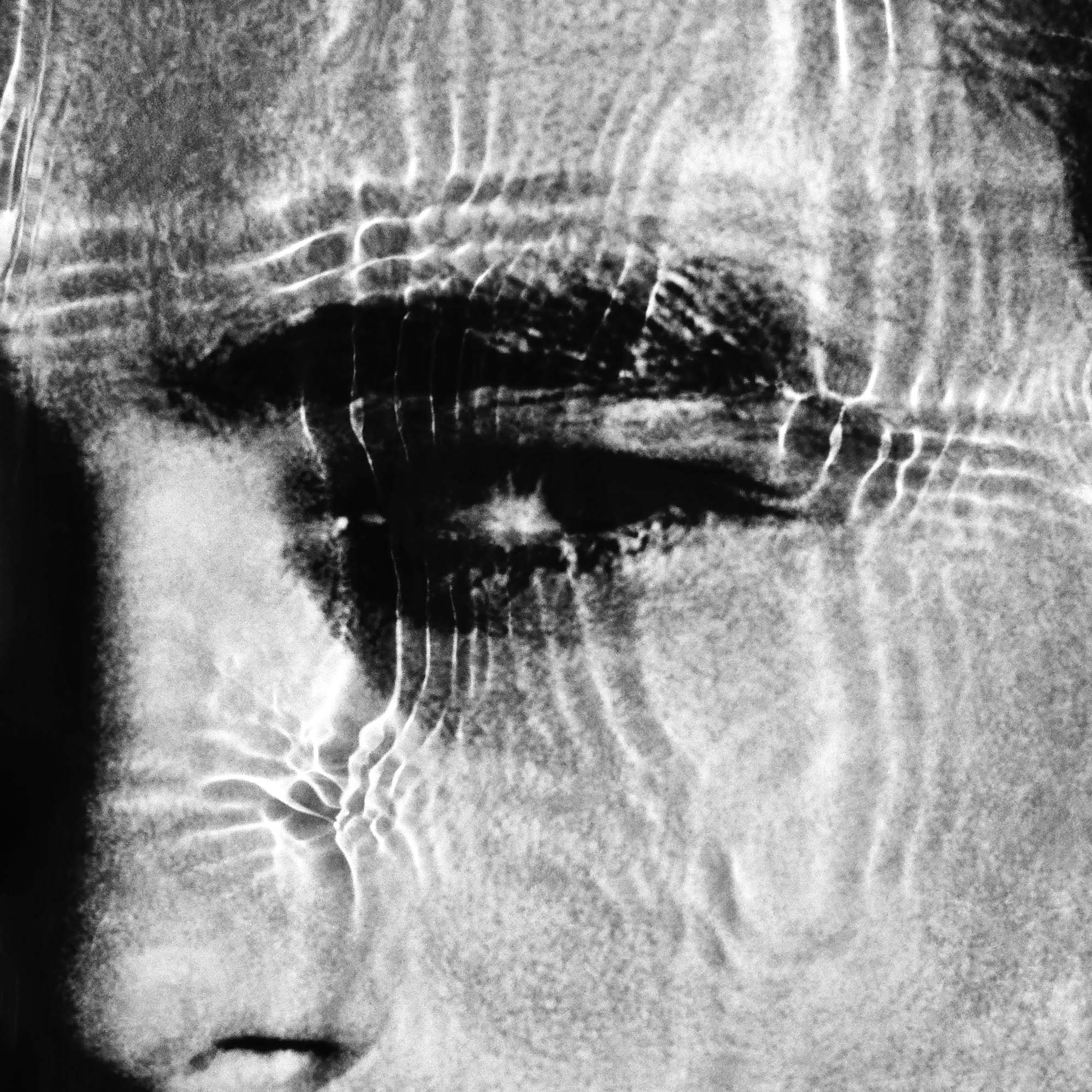
For Italian fashion photographer Alessio Boni, New York was a gateway to his American dream, which altered his life forever. In a series of highly personal works, made with his own unique process, he explores an apocalyptic clash of cultures.
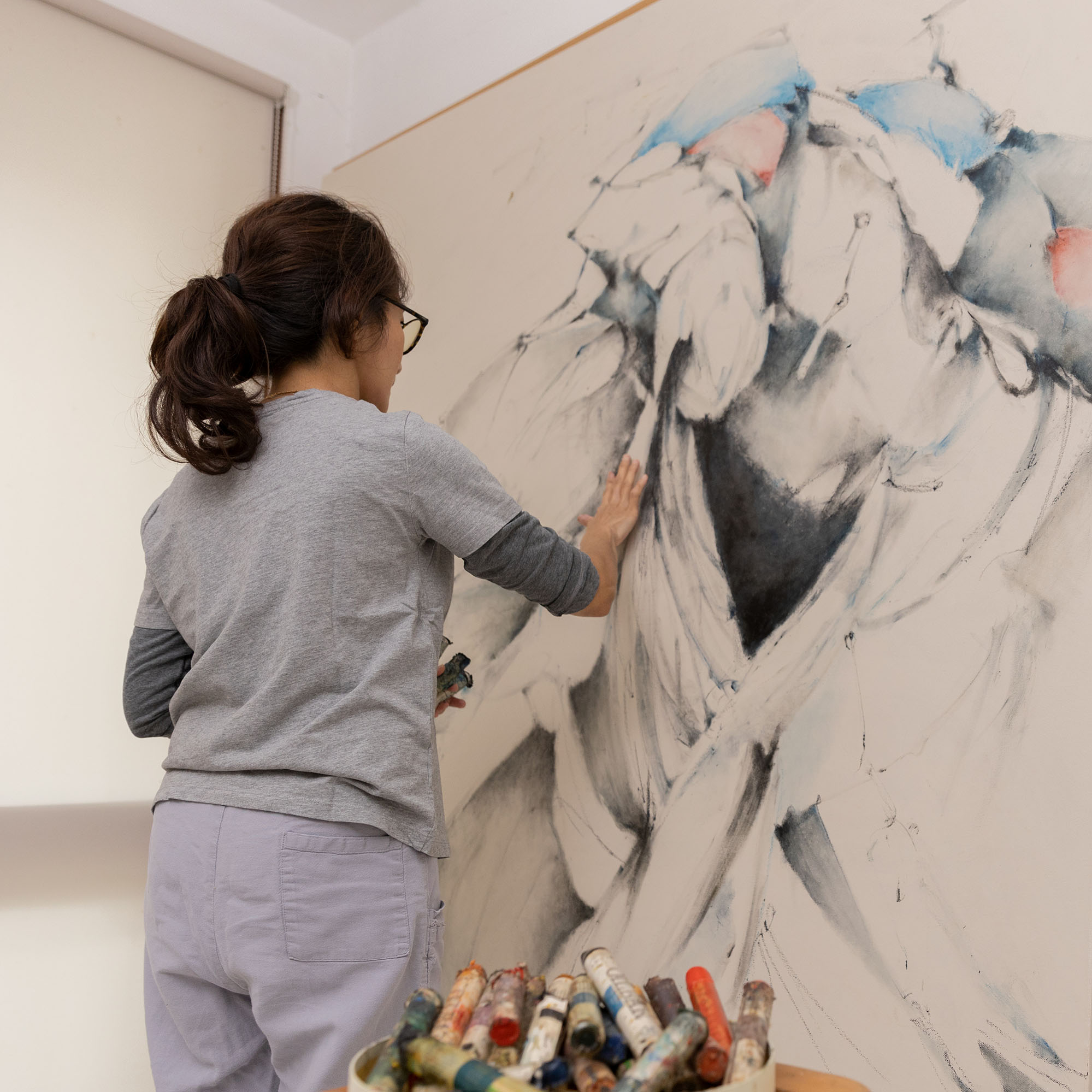
Plus, an exciting young British artist receives a retrospective, Marcel Dzama's whimsical drawings take a political turn in L.A., and more gallery openings.